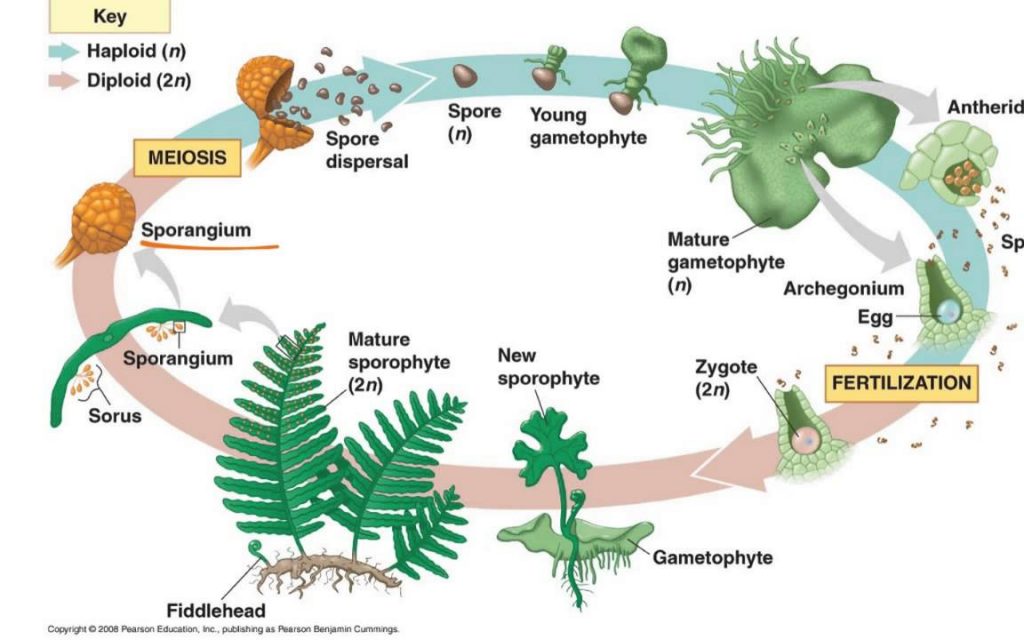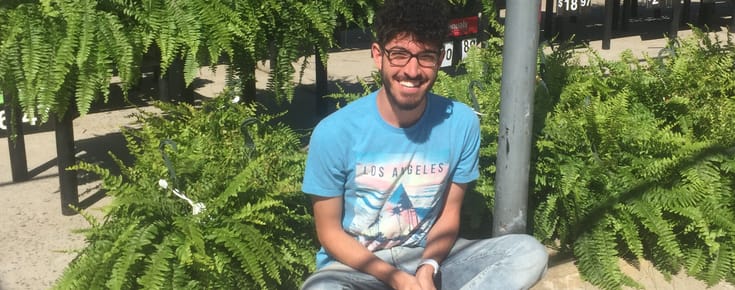Last Updated on June 26, 2024

A significant portion of my sophomore year was spent learning about the plant life cycle. In particular, we studied the incredible cycle that is the Alternation of Generations. Where multicellular plants and their gametes cycle between a haploid “n” state and a diploid “2n” state. This fluctuation between haploid and diploid stages often occurs in plants and is called the alternation of generations.

Throughout the entire course, the textbook always referred to drawings of ferns. I stared at the pictures in confusion wondering if I had ever seen a plant that looked anything like a fern. I could not recall. In fact, the fern was consistently used as an example since supposedly, they are super common and everyone (except me?) knows what a fern is.
Finally, 20 years later, I have recognized my first fern in real life. Wow, writing this post made me realize how much I miss biology.
(Weekly Photo Challenge: Admiration)
The Fern: A Perfect Example of Alternation of Generations
The plant kingdom is vast and diverse, encompassing a myriad of reproductive strategies. Among these, the phenomenon known as alternation of generations stands out as a fascinating and complex cycle, particularly well exemplified by ferns. This biological process involves the alternation between two distinct life forms: the sporophyte and the gametophyte. Here’s an in-depth look at why the fern is such a great example of alternation of generations and what makes this reproductive strategy so remarkable.
Understanding Alternation of Generations
The Basics of the Cycle
Alternation of generations is a reproductive cycle found in plants and some algae that involves alternating between two multicellular stages: the diploid sporophyte and the haploid gametophyte. These two generations differ in their chromosome numbers and their roles in the life cycle.
- Sporophyte Generation: The diploid (2n) phase, where the plant produces spores through meiosis. These spores are haploid (n) and can grow into a new organism without fertilization.
- Gametophyte Generation: The haploid (n) phase, where the plant produces gametes (sperm and eggs) through mitosis. Fertilization of these gametes results in the formation of a diploid zygote, which then grows into a new sporophyte.
The Significance
This alternation allows for genetic variation and adaptation, as it incorporates both sexual and asexual reproductive strategies. It also ensures that plants can thrive in various environmental conditions by diversifying their reproductive methods.
The Fern Life Cycle: A Detailed Example
Ferns are non-flowering vascular plants that provide a textbook example of alternation of generations. Their life cycle clearly demonstrates the distinct sporophyte and gametophyte stages.
The Sporophyte Stage
- Mature Sporophyte: The familiar leafy fern plant that we commonly recognize is the sporophyte. It is diploid and bears sporangia, which are specialized structures that produce spores.
- Spore Production: Within the sporangia, cells undergo meiosis to produce haploid spores. These spores are then released into the environment.
- Spore Dispersal: Spores are typically dispersed by wind or water. When they land in a suitable environment, they germinate and grow into a new organism, but not into another sporophyte.
The Gametophyte Stage
- Germination and Growth: The spores grow into tiny, heart-shaped structures called prothalli. This is the gametophyte generation, and it is haploid.
- Gametophyte Development: The prothallus is independent and photosynthetic, usually measuring only a few millimeters across. It bears both male and female sex organs: antheridia (producing sperm) and archegonia (producing eggs).
- Fertilization: Water is essential for fertilization in ferns. Sperm released from the antheridia swim through water to reach the archegonia and fertilize the eggs.
- Zygote Formation: The fertilized egg (zygote) is diploid and grows into a new sporophyte, completing the cycle.
Why Ferns Exemplify Alternation of Generations So Well
Distinct Generations
In ferns, the sporophyte and gametophyte generations are physically distinct and independent, unlike in some other plants where one generation might be more dominant or less recognizable. The clear differentiation allows for easy observation and study of both stages.
Visibility of Both Stages
Both the sporophyte and gametophyte stages are visible to the naked eye, unlike in many other plants where the gametophyte is microscopic or enclosed within the sporophyte. This visibility makes ferns excellent subjects for educational purposes and biological research.
Independence of Generations
In ferns, the gametophyte (prothallus) can live independently of the sporophyte. It carries out photosynthesis, absorbs water and nutrients from the soil, and produces gametes, showcasing its role as a separate entity in the life cycle.
Adaptability and Evolution
The clear alternation of generations in ferns highlights the evolutionary adaptability of plants. This reproductive strategy allows for genetic diversity through sexual reproduction and widespread colonization through the production of numerous spores.
Educational Importance
Ferns are often used in classrooms and laboratories to teach students about plant life cycles and alternation of generations because their life cycle stages are distinct, observable, and easy to cultivate. This makes them invaluable in helping students understand the complexities of plant reproduction and the evolutionary significance of alternation of generations.
Conclusion
The fern is a quintessential example of alternation of generations, vividly demonstrating the distinct and independent phases of sporophyte and gametophyte generations. Its clear differentiation of life stages, visibility of both generations, and independence of the gametophyte make it an ideal model for studying this fascinating biological process. As we continue to explore and understand the complexities of plant life cycles, ferns remain a critical and enlightening subject, providing insight into the adaptive strategies that have allowed plants to thrive across the globe.




Maybe they just aren’t as prominent where you live. Here in Texas they are basically hanging on everyone’s porch because they are super easy to take care of.
I’ve always liked them because they remind me of a book I read when I was younger “Where the Red Fern Grows”. Which is a heartbreaking book about a boy in the Ozark mountains of Oklahoma and his two dogs.
Haha I think they’re pretty common here too. I’m apparently just oblivious to certain things. And no way!!!! Where the Red Fern Grows is one of my favorite books! It’s listed as one on my blog!
Again, I feel silly for even saying this but… I didn’t even notice the “fern” overlap between the book title and this. Never made the connection until now. For what it’s worth, a fern (now that I know what they look like) is not AT ALL what I imagined in my head when I read that novel.